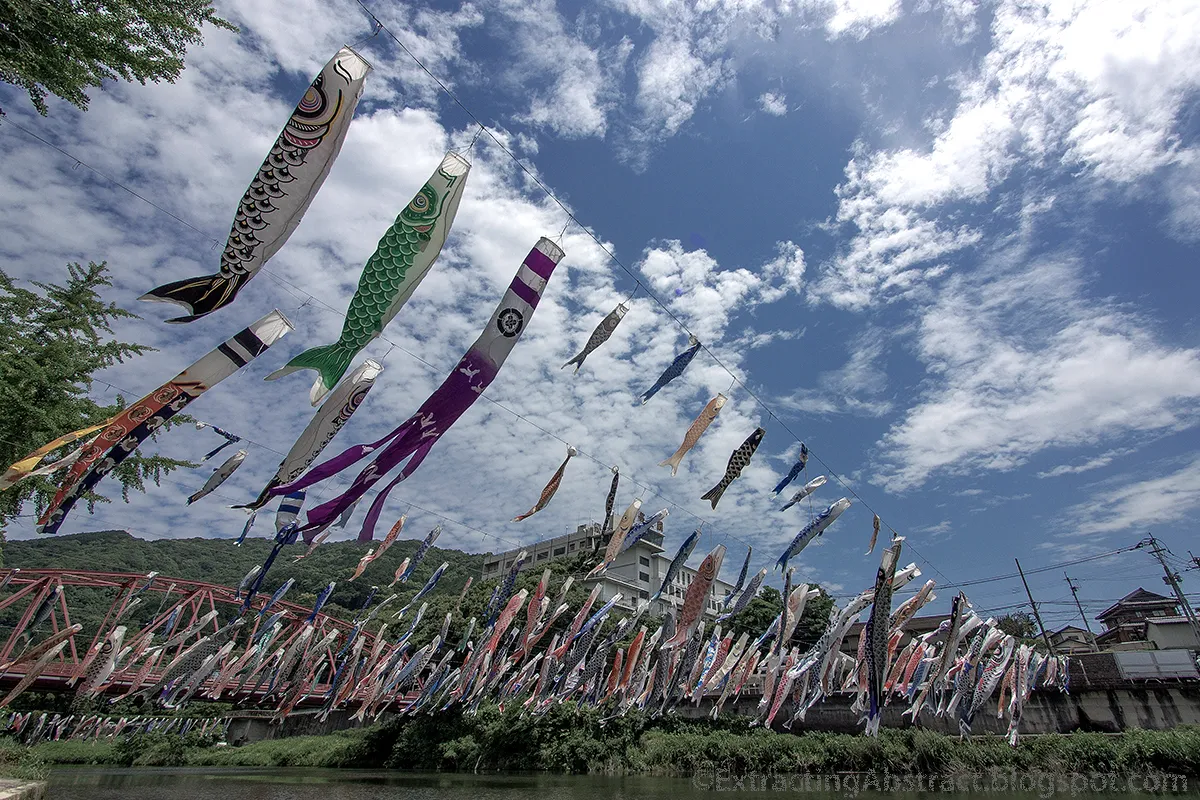Koinobori (鯉のぼり) - a carp kites fit well in the blue spring sky in Japan!
A tradition of hanging carp-shaped windsocks up in Children's Day, May 5th, was originated from Chinese mythology.
In an ancient China, the Dragon's gate (登龍門) is believed to be the swift stream of Yellow river located at Shanxi province. The gate was made through excavating the legendary mountain, Mt. Dragon (龍門山). The construction was ordered by "Ye the Great", a founder of Xia dynasty (2070-1600 BC), according to Wiki in Japanese (Chinese Wiki says Mt. Dragon is located at Luoyang).
Numerous fish tried to leap such devastating rapids of the Dragon's gate, however, none of them were successful.
Except carp!
A carp that can accomplish the mission eventually turned into the Dragon, according to Chinese myth. Dragon is a symbol of power, strength, fortune and so on. It also represents imperial power. The image of a carp jumping over Dragon’s Gate is an old and enduring Chinese cultural symbol for courage, perseverance, and accomplishment.
In Japan, May 5th (called Tango no sekku/端午の節句) is one the five annual ceremonies that were traditionally held at the Japanese imperial court. Interestingly, in ancient Japan, May 5th was the one for women but around Edo period, it became what it is in present time (for boy's ceremony).
When I visited Yodohime shrine (與止日女神社), the most prestigious shrine in Hizen Province (current Saga Prefecture), the spring festival (第40回川上峡春まつり) took place in Kase river (嘉瀬川) that runs by Yodohime shrine.
 |
| Rescued black carp |
The weather was nice and the sky was blue. But not much wind... They don't look like a triumphal carps transforming into dragon...
Rather they look gasping:(((
 |
| Gasping for breath... |
Thanks to an occasional breeze, they looked alive... a bit.
"Boys be ambitious" by William S. Clark.


No comments:
Post a Comment
Your comments are always welcome! It's NOT a bad idea to follow this blog, if you are not a follower already:)
日本語でのコメント大歓迎です。